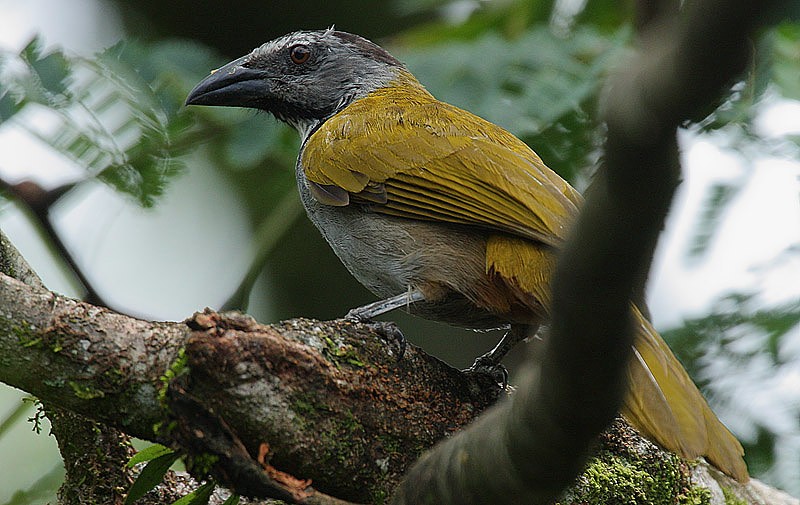Black-headed Saltator
A species of Typical Saltators Scientific name : Saltator atriceps Genus : Typical Saltators
Black-headed Saltator, A species of Typical Saltators
Botanical name: Saltator atriceps
Genus: Typical Saltators
Content
Description General Info
 Photo By Steve Garvie , used under CC-BY-SA-2.0 /Cropped and compressed from original
Photo By Steve Garvie , used under CC-BY-SA-2.0 /Cropped and compressed from original Description
The black-headed saltator (Saltator atriceps) is a seed-eating bird in the tanager family Thraupidae. It breeds from central Mexico to eastern Panama. This bird is on average 24 cm (9.4 in) long and weighs 85 g (3.0 oz). The adult has a slate-grey head with a whitish supercilium. The upperparts are yellowish green, the underparts are pale grey, and the throat is white edged with black. The thick convex bill is black and the legs are brown. Young birds are duller and have mottling on the breast and brown markings on the underparts. This species is similar to the buff-throated saltator but is larger and has a darker head and paler under parts with a yellow patch on the throat. The common call is a raucous deeeer. The song is a loud scratchy cher cher jur jur weeee, often given by males as a duet. The black-headed saltator is a species of dense vegetation. The black-headed saltator feeds on fruit, buds, nectar, and slow-moving insects. It forages at low and mid levels, sometimes with mixed species flocks. The two black-marked pale blue eggs per clutch measure some 24–34 mm (0.94–1.34 in) long by about 18–23.5 mm (0.71–0.93 in) wide and weigh about 4.9–5.5 g (0.17–0.19 oz) each. They are laid in a bulky grass-lined cup nest up to 3 m (9.8 ft) high in a thicket between April and July. 
Size
24 cm
Nest Placement
Shrub
Feeding Habits
Black-headed Saltator embraces an omnivorous diet, feasting on small fruits, seeds, and insects, along with nectar-rich flowers and tender buds. It showcases varied foraging activities, often adapted to leveraging food sources abundant in its environment.
Habitat
Black-headed Saltator typically inhabit regions that transition between humid and semiarid zones. Their environment includes forest edges, various types of plantations—particularly cacao and coffee—and low-density secondary growths. The species favors brushy pastures and gardens, often establishing themselves close to water sources. Black-headed Saltator are adaptable, found from ground level undergrowth to the treetops, with a preference for the midstory up to the canopy of their habitats.
Dite type
Granivorous
General Info
Feeding Habits
Bird food type
Species Status
Not globally threatened.
Scientific Classification
Phylum
Chordates Class
Birds Order
Perching birds Family
Cardinals Genus
Typical Saltators Species
Black-headed Saltator